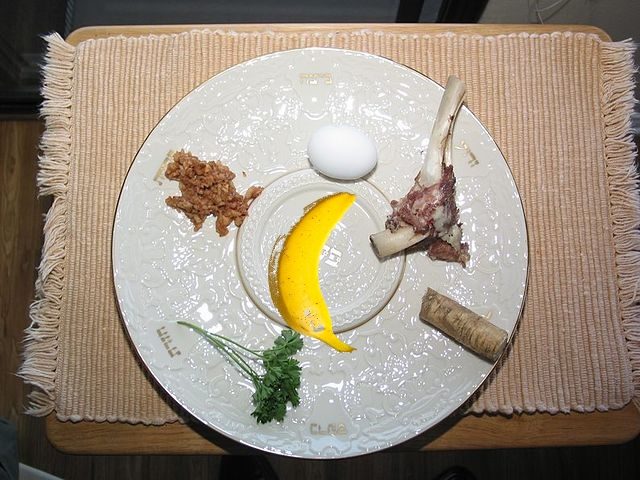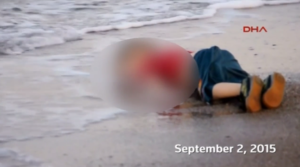
This year Passover begins at sundown on Monday, April 10th. Passover is a festival of freedom and commemorates the Israelites’ Exodus from Egypt and their transition from slavery to freedom.
After thousands of years of tradition and symbolism, the seder plate will now have a new addition – a banana.
Why is this Seder plate different?
The banana honors 3-year-old Aylan Kurdi, a Syrian boy of Kurdish background whose family fled Syria. Aylan’s lifeless body washed ashore on a Turkish beach in 2015. His brother, mother and three other children also drowned when their dinghy capsized. Aylan’s father survived and described how his two young sons loved bananas, a luxury in war-torn Syria. He brought them a banana as a daily treat.
The featured ritual of Passover is the seder, which occurs on the first two nights (in Israel just the first night) of the holiday. The seder is a festive meal that involves the re-telling of the Exodus through stories and song and the consumption of ritual foods, including matzah and maror (bitter herbs).
The dinner table is set with a seder plate that contains:
- A roasted shankbone, symbolizing the Pesach sacrifice in the Temple
- A roasted egg symbolizing either the spring season or mourning (for the destruction of Jerusalem)
- Maror (bitter herbs) to represent the bitter experience of the Hebrew slaves
- Haroset (a mixture of apples, nuts, raisins, spices, wine) symbolizing the mortar the Hebrew slaves used to build the pyramids for the Egyptians
- Karpas (parsley, celery, or another green vegetable) symbolizing the green of spring.
The table must also have three pieces of matzah, each piece used for a different purpose, usually held in a special pouch made to be used during the seder.
Last year, the Religious Action Center of Reform Judaism suggested placing a banana among the other traditional symbolic foods on the Seder plate to honor the memory of young, Aylan Kurdi.
Rabbi Dan Moskovitz of Temple Shalom in Vancouver, Canada — where Aylan’s family had hoped to eventually settle with a relative — wrote the banana story for the Action Center’s Haggadah supplement.
This is what Rabbi Moskovitz wrote:

The world was awakened and shattered by the images of a little boy whose body lay lifeless amidst the gentle surf of a Turkish beach this past summer. Another nameless victim amongst thousands in the Syrian Refugee Crisis, the greatest refugee crisis since WWII. But this little boy, like every little boy,had a name.
Tonight we place a banana on our seder table and tell this story to remind us of Aylan, Galip and children everywhere who are caught up in this modern day exodus. May they be guarded and protected along their journey to safety, shielded by the love of their parents, watched over by God full of mercy and compassion.
Sources:












